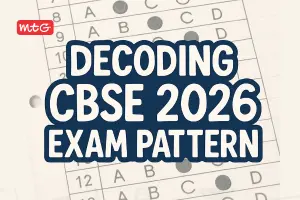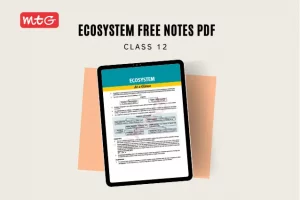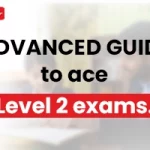The Class 12 Biology MCQ questions on Sexual Reproduction in Flowering Plants with Answers have been organized according to the latest exam pattern in the CBSE Class 12 Biology syllabus. These questions are designed to help students understand the concept thoroughly and will help prepare students for their upcoming CBSE class 12 biology exam. They are not only helpful for revision but also for grasping the concepts effectively. The MCQ questions for Chapter 1 Sexual Reproduction in Flowering Plants cover in-text book questions and important topics to help students assess their preparation level for CBSE board exams.
CBSE Class 12 Chapter 1 Sexual Reproduction in Flowering Plants MCQs
Check below the MCQ Questions for class 12 Biology with answers and Clear your idea of Chapter 1 Sexual Reproduction in Flowering Plants.
Q.1. Cleistogamous flowers are invariably autogamous because
(a) these flowers do not open at all.
(b) there is no chance of self – pollen landing on the stigma.
(c) these flowers have exposed anthers and stigma.
(d) these flowers are wind pollinated.
Answer
Check Out – 11 Most Important Graphics of NCERT Class 12th Biology That You Cannot Miss
Q.2. Which of the following holds true regarding dicot embryo?
I. Basal cell produces a single celled suspensor.
II. Terminal cell produces the whole embryo.
III. The first division of terminal cell is generally longitudinal.
IV. Plumule is terminal and less in between the two elongated cotyledons.
(a) II and IV (b) III and IV (c) I and III (d) II and III
Practice More – CBSE Sample Paper Class 12 for 2023-24 Boards | FREE PDF from MTG
Answer
Q.3. When the inner half of the oospore after the first division develops into an embryo and outer half develops into suspensor, then this type of development is called
(a) endosporic (b) endoscopic (c) exosporic (d) exoscopic.
Answer
(b): Endoscopic embryogeny can be defined when the embryo develops from the inner of the two cells that results of the first division of zygote. The outer or the external cells develop the suspension.
Q.4. Refer to the given figure and select the incorrect option

(a) W stores food is monocot seed.
(b) X is the rudimentary cotyledon
(c) Y is a foliar structure that encloses leaf primordia
(d) Z is root cap that covers radicle
Answer
Q.5. Plant X is pollinated by wind. Which of the following holds true about it?
(a) Platn X only produces cleistogamous flowers.
(b) Plant X could be Calotropis or Amorphophallus
(c) Plant X produces pollen grain in very large numbers.
(d) Flowers of plant X are bright, showy and have a landing platform.
Answer
Q.6. Most plants have complete bisexual flowers having both androecium and gynoecium still most of them undergo cross-polination contrivances in different plant species?
(a) In sunflower and Saliva, anthers mature earlier than stigma of the same flower.
(b) In Pansy, stigma less inside a flap while in Kalmia anthers occurs inside corona pocket.
(c) In Mirabilis, the anther and stigma mature at the same time.
(d) Both (a) and (b)
Answer
Q.7. Choose the incorrect statement.
(a) Autogamy and geitonogamy are not possible in papaya plant.
(b) Date palm can undergo only cross pollination
(c) Self pollination is possible in maize and coconut plant
(d) Geitonogamy and Xenogamy both can occur in cucurbits.
Answer
Q.8. The plant parts which consist of two generations-one within the other
(1) pollen grains inside the anther
(2) germinated pollen grain with two male gametes
(3) seed inside the fruit
(4) embryo sac inside the ovule.
(a) (1) only (b) (1), (2), and (3)
(c) (3) and (4) (d) (1) and (4)
Answer
Q.9. The given figure show anther and stigma of a plant.

What can be inferred about the plant?
(a) Plant produces edible pollens and nectar
(b) Pollination is highly specific and directions
(c) Plant produces pollen in very large
(d) Plant could be Callistemon or Saliva
Answer
Q.10. Choose the correct statement.
(a) In apple and grape pollens of another flower germinate more rapidly on the stigma than the pollens of same flower.
(b) In Mirabilis jalapa, stigma mature earlier so that they get pollinated before the anther of the same flower develop pollens.
(c) In mulberry, male and female flowers are borne on separate plants thereby ensuring cross Appollination.
(d) All of these
Answer
We hope the MCQs for the CBSE Class 12 Biology Chapter 1 on Sexual Reproduction in Flowering Plants are helpful for your board exam preparation.
Keep learning and stay updated with us for more CBSE exam updates.






























